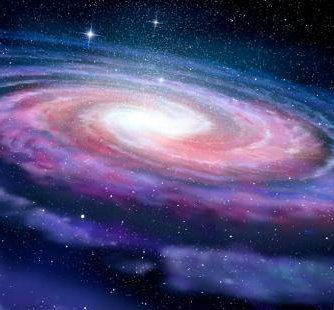A Brief History of Cosmology and Galaxy Formation 1

A Brief History of Cosmology and Galaxy Formation
Pre-History
It always comes as a surprise to me to realize how recent our understanding of galaxies, cosmology and galaxy formation really is. The motions of the Sun, Moon and planets against the background of the ‘fixed stars’ had been studied from ancient times, but the scientific study of their motions in the modern sense only began in the sixteenth century. The developments which led to the Newtonian revolution can be traced to the technological and observational achievements of Tycho Brahe in the final decades of the sixteenth century. I have told this remarkable story elsewhere (Longair, 2003).
Tycho Brahe measured the positions of the Sun, Moon, planets and 777 stars over a period of 20 years, resulting in an order of magnitude improvement in the accuracy with which their orbits were determined over all previous measurements. In the year before his death, he employed Johannes Kepler as his assistant and assigned him the task of working out the orbits of the planets from his magnificent data sets.
In the period 1601 to 1619, Kepler succeeded in interpreting the mass of Tycho’s data in terms of elliptical planetary orbits about the Sun, which was located in one of the foci of each ellipse. Kepler’s discovery of his three laws of planetary motion was a miracle of geometrical analysis. The three laws embody not only the elliptical orbits of the planets (the first law), but also the areal law – that equal areas are swept out by the radius vector from the Sun to the planet in equal times (the second law) – and the dependence of the period T of the planet’s orbit about the Sun upon the three-halves power of its mean distance r from the Sun, T ∝ r 3/2 , (the third law).
In 1664, at the age of only 21, Isaac Newton first derived his law of gravity from Kepler’s third law.
In 1692 Richard Bentley gave the first series of Boyle Lectures which Robert Boyle had founded ‘to combat atheism’. Bentley took as his theme Newton’s ‘sublime discoveries’ and entered into a short but profound correspondence with Newton about the nature of our physical Universe. The question at issue was the stability of a finite or infinite Universe filled with stars under the attractive force of gravity.
The conclusion of the correspondence was that the Universe must be infinite because, if it were not, it would collapse to its center under gravity. With remarkable insight, they recognized, however, that an infinite Universe filled with stars is gravitationally unstable. If a star is displaced from its equilibrium position, it continues to accelerate in that direction. To quote Harrison:
(Newton) agreed with Bentley that providence had designed a universe of infinite extent in which uniformly distributed stars stand poised in unstable equilibrium like needles on their points (Harrison, 1987).
It was only in the twentieth century that the nature of this instability was fully appreciated. For a static medium, the instability criterion and the growth rate of the instability were derived by James Jeans in 1902 and the corresponding results for an expanding medium by Georges Lemaître, Howard Robertson and Evgenii Lifshitz in the 1930s and 1940s. Their results are central to the understanding of the problems of the formation of structure in the Universe and the modern working out of their basic insights will dominate much of the discussion throughout this book.
As part of the dialogue with Bentley, Newton proposed that the stars are objects like the Sun and he made star counts in an attempt to show that the stars are indeed uniformly distributed in space. From the seventeenth century onwards, most astronomers assumed that the stars are objects similar to the Sun, but at vastly greater distances. The problem was to find means of measuring their distances. If they were assumed to have the same intrinsic luminosities as the Sun, the inverse square law could be used to estimate distances by comparing the relative brightnesses of the Sun and the distant stars. The technical problem was that the Sun is so much brighter than the brightest stars that is was difficult to make good estimates of the ratio of their observed flux densities, or apparent magnitudes. An ingenious solution was discovered in 1668 by James Gregory, who used Jupiter as an intermediate luminosity calibrator, assuming that its light was entirely sunlight reflected from the disc of the planet and that its surface was a perfect reflector. Then, the apparent magnitudes of Jupiter and the bright star Sirius could be compared and the distance of Sirius was found to be about 83,190 astronomical units (Gregory, 1668). The same method was used by John Michell in 1767 using Saturn as an intermediary to estimate of a distance of 460,000 astronomical units for Vega, or α Lyrae.
The method of Gregory and Michell depended upon the assumption that all the stars have the same absolute luminosities. The first direct measurements of stellar distances were made by the technique of stellar parallaxes, the first successful measurement being announced in 1838 by Friedrich Bessel for the star 61 Cygni. The measurement of stellar parallaxes was however difficult and demanding technically and by 1900 only about 100 parallaxes were known for stars in the vicinity of the Sun
 First Solvay Conference on Physics
First Solvay Conference on Physics

Hope is the bedrock of this nation. The belief that our destiny will not be written for us, but by us, by all those men and women who are not content to settle for the world as it is, who have the courage to remake the world as it should be.
---Barack Obama







